16. Applications and implications¶
Assignments:
- Propose a final project masterpiece that integrates the range of units covered, answering:
- What will it do?
- Who’s done what beforehand?
- What will you design?
- What materials and components will be used?
- Where will come from?
- How much will they cost?
- What parts and systems will be made?
- What processes will be used?
- What questions need to be answered?
- How will it be evaluated?
- Your project should incorporate:
- 2D and 3D design,
- additive and subtractive fabrication processes,
- electronics design and production,
- embedded microcontroller interfacing and programming,
- system integration and packaging
- Where possible, you should make rather than buy the parts of your project.
Projects can be separate or joint, but need to show individual mastery of the skills, and be independently operable.
Given the special character of this assignment, I will answer in different subsections the various questions raised hereabove concerning the final project I have been working throughout this Fab Academy program.
What?¶
For my final project to complete the Fab Academy program I have decided to work on a Puzzle Box (also called a “Secret Box” or a “Trick Box”). The idea is to manage opening the box as fast as possible by resolving a series of puzzles, and is thus purely for entertainment purposes. Technically this game can be solved by a single person, but it is more fun to tackle it as a team of friends or family, especially as collaboration is often key for success. With my Puzzle Box, I wish I can offer to my family and friends a very special moment together.
The box will be made out of beech plywood and will consist of 2 drawers locked by solenoid mechanisms and a main door locked by a servomotor. It will feature 4 electronics puzzles to be solved :
- Capacitive sensors sequence.
- Wire connections sequence.
- RFID access control.
- Digicode access control.
Additional elements such as engraved text/drawings and 3D printed objects will help players to solve the puzzles. A LCD will also be used to display messages to guide players throughout their progression in the game.
Similar existing products¶
The escape room concept has turned to be so attractive that it has been declined in many different forms:
- Real-life escape rooms.
- Board games.
- Puzzle boxes.
- Virtual escape rooms.
- Movies.
Real-life escape room :
Board game :
Puzzle box :
Many examples can be found on the internet, I will just give one or a few examples here :
Lincoln Craven-Brightman, a student from Harvard also did this lion head puzzle.
Some people on the internet such as Chris Ramsay are famous for trying to solve all sorts of puzzles, and some of them cost an incredible amount of money.
Design¶
Here are the parts that I have designed for my puzzle box :
- The box itself (including drawers and all the interior pannels to hide electronic components and wires).
- Several 3D printed supports to hold electronics components inside the box.
- Two 3D printed screwable viruses that will contain elements to progress in the game (RFID tag, and electronic wire).
- DNA keypad and associated mold for the digicode access control.
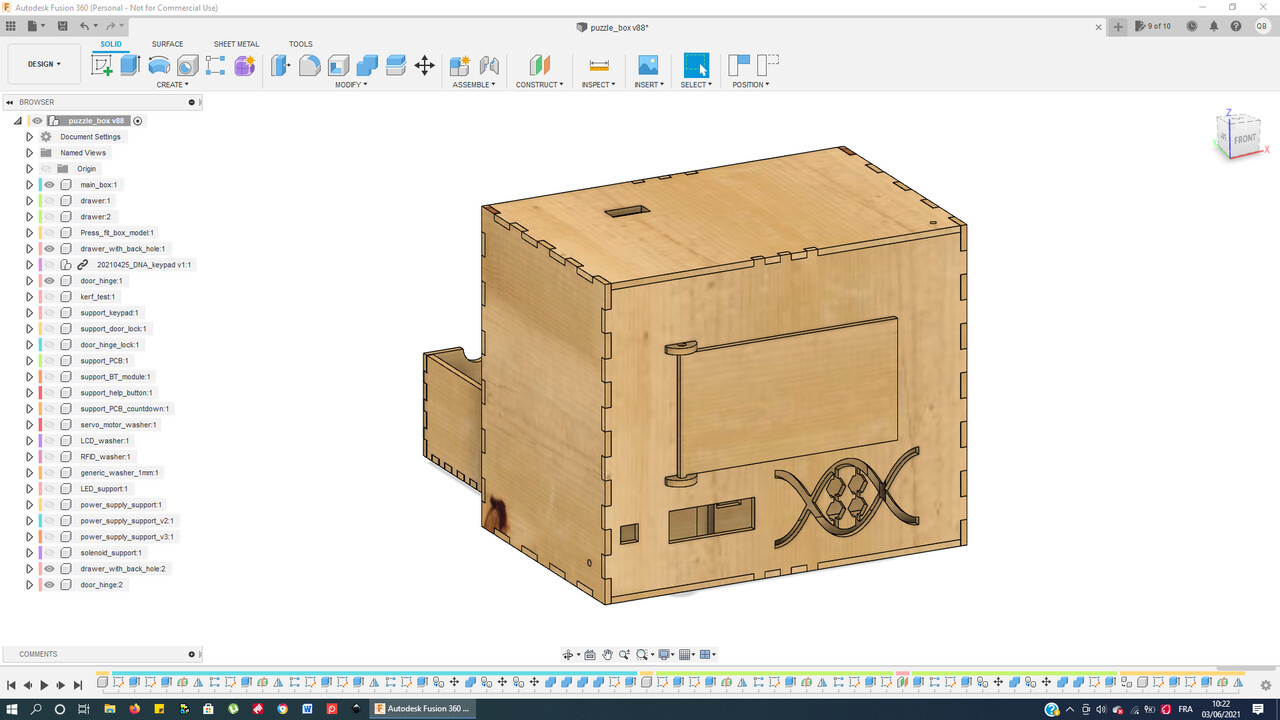 |
 |
| Puzzle Box - Front view - Fusion 360 | Puzzle Box - Back view - Fusion 360 |
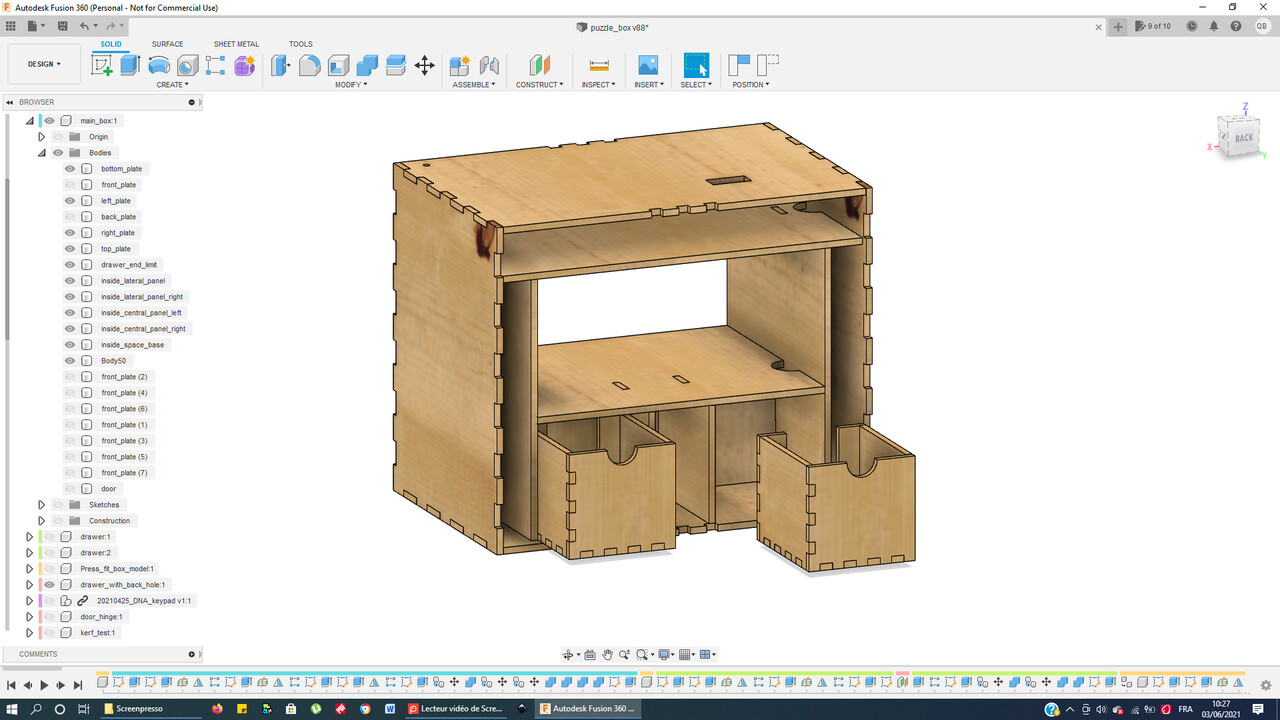 |
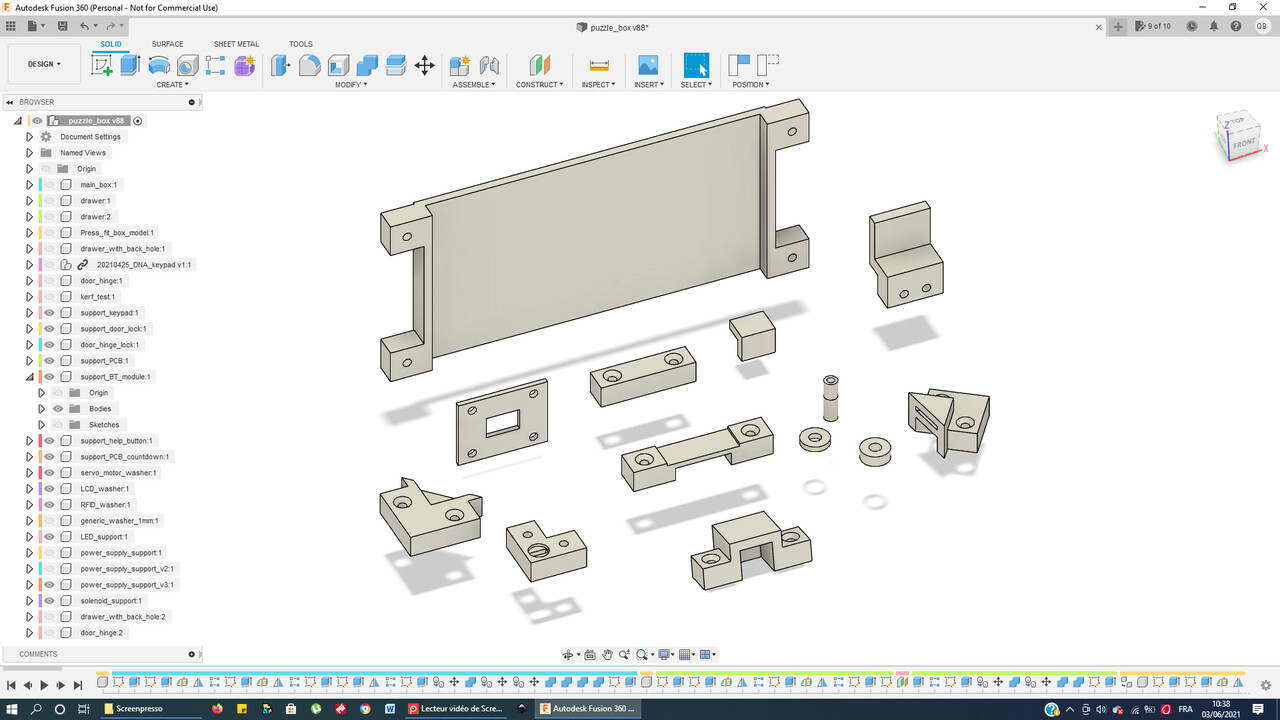 |
| Puzzle Box - Inside view - Fusion 360 | Puzzle Box - Electronics supports - Fusion 360 |
 |
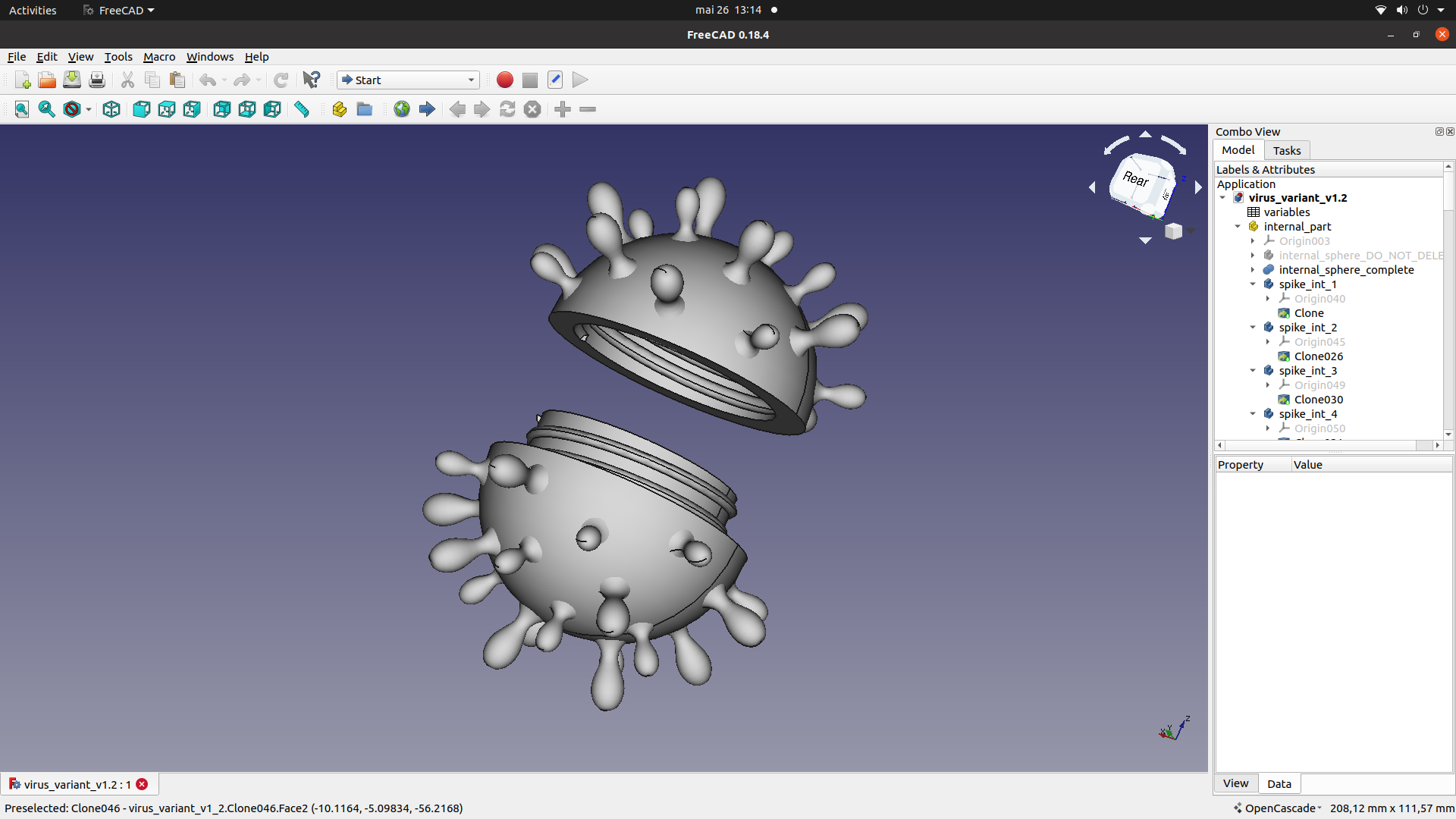 |
| Virus model - FreeCAD | Virus variant model - FreeCAD |
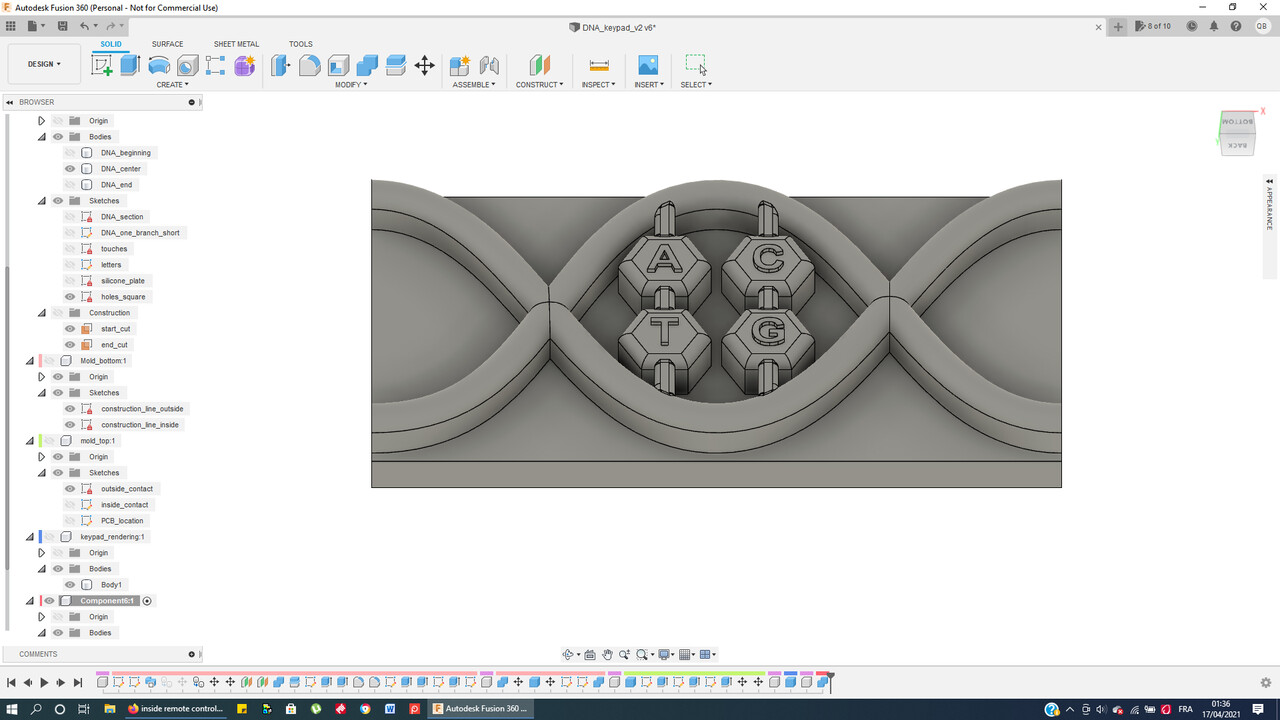 |
 |
| DNA keypad - front view - Fusion 360 | DNA keypad - back view - Fusion 360 |
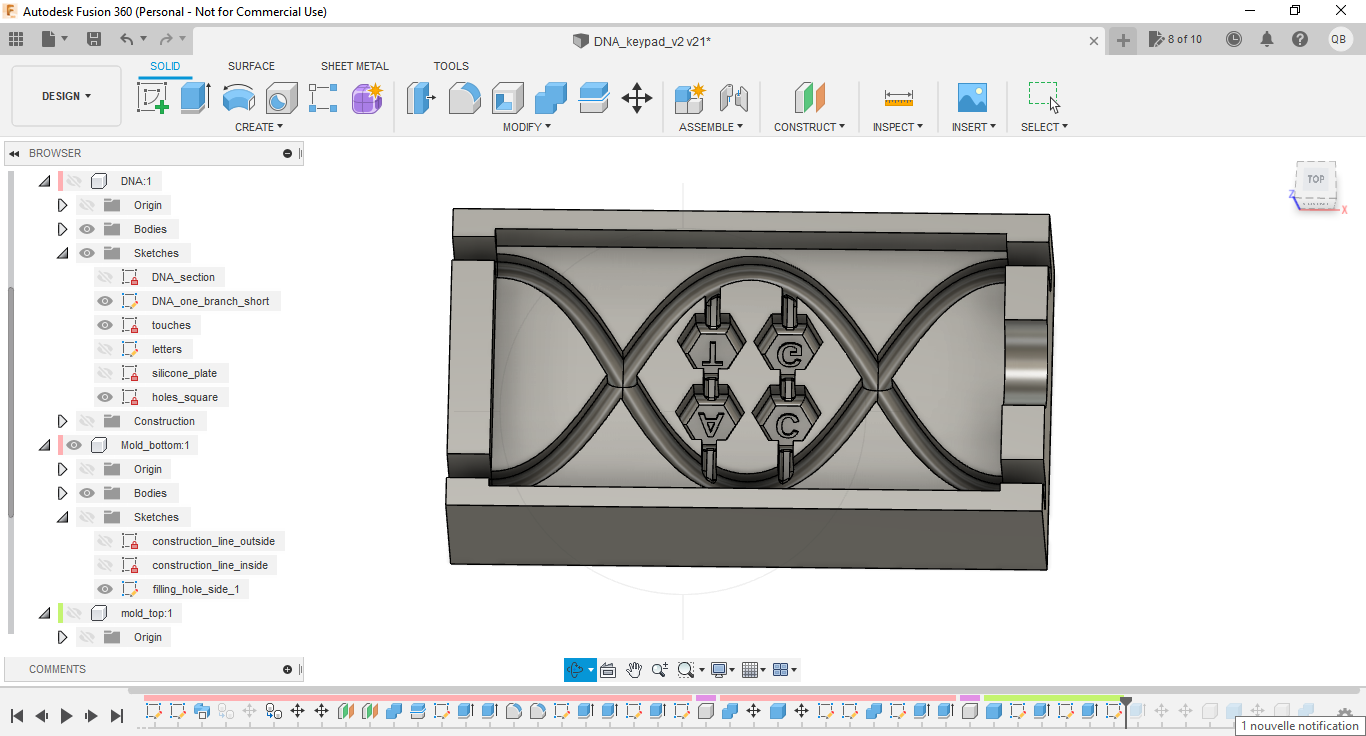 |
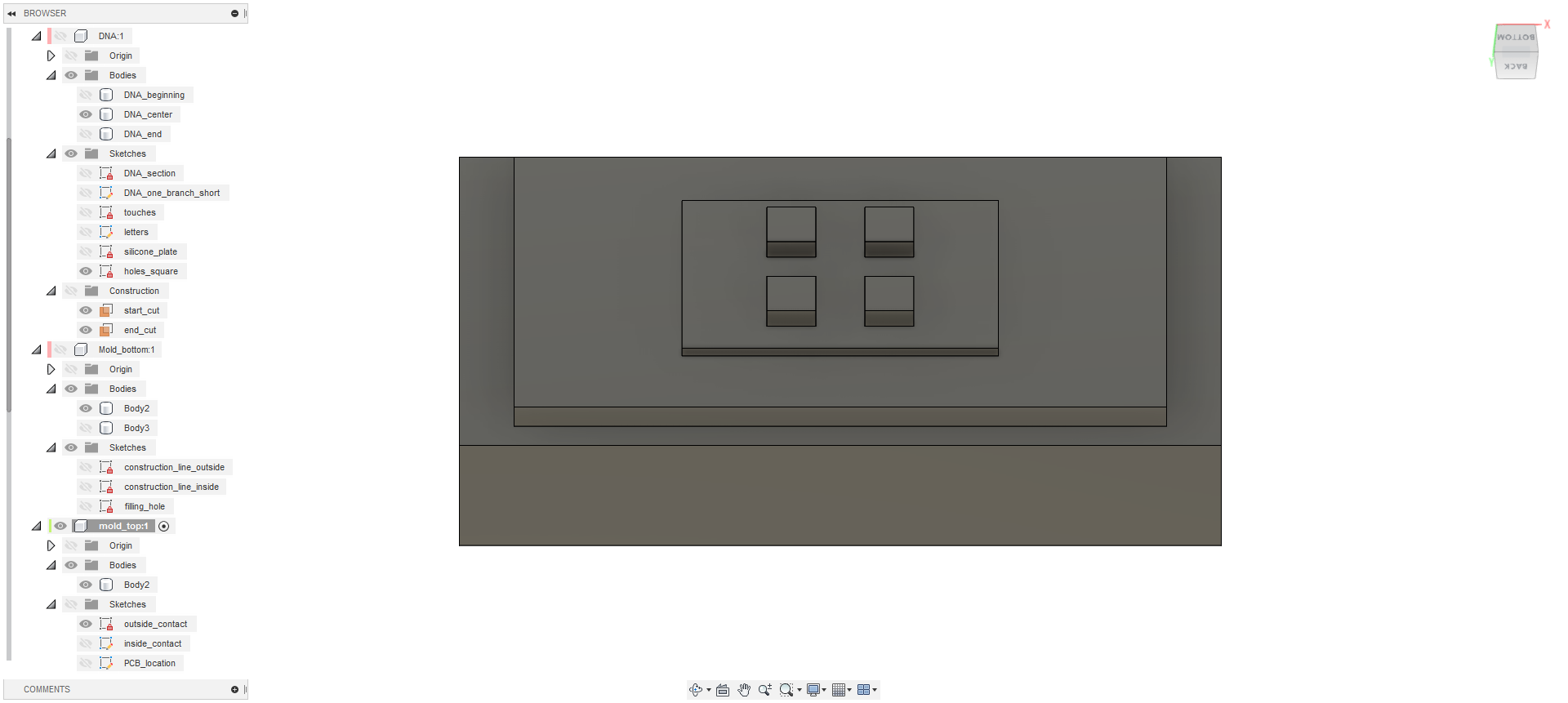 |
| Keypad mold bottom part - Fusion 360 | Keypad mold top part - Fusion 360 |
Materials, components and cost¶
| Part | Quantity | Unit price (euros) | Total price (euros) | Origin |
|---|---|---|---|---|
| Beech Plywood (100x70cm) | 2 | 17.75 | 35.50 | France |
| Formlabs Tough FLTOTL03 resin | 50 mL | 143 euros/L | 7.15 | USA |
| Ultimaker PLA | - | 39.60 euros/750g | - | USA |
| Wax block (1.5”H x 3”W x 7”L) | 2 | 13.5 | 27.00 | USA |
| Silicone Smooth-On Mold Star 16 FAST | 80 mL | 16.85 euros/400mL | 3.37 | USA |
| FR4 copper plate (100x160x1.6mm) | 3 | 3.50 | 10.50 | - |
| 5V solenoid | 2 | 4.75 | 9.50 | China |
| Servomotor | 1 | 16.30 | 16.30 | USA |
| Bluetooth module HC-06 | 1 | 8.98 | 8.98 | China |
| RFID reader and tag | 1 | 2.33 | 2.33 | China |
| LCD and i2c module | 1 | 4.83 | 4.83 | Germany |
| Four 7-segments digits display | 1 | 2.33 | 2.33 | Hong Kong |
| ATmega 328P microcontroller | 2 | 1.96 | 3.92 | USA |
| ATTiny 2313 microcontroller | 1 | 1.14 | 1.14 | USA |
| Jumper wires | about 50 | 0.04 | 2 | China |
| Electronic components (resistors, capacitors, etc) | - | - | - | China |
| Screws (12x3mm) | 36 | 0.05 | 1.8 | - |
| TOTAL | 136.65 |
Parts and subsystems made¶
All parts but the following electronics components have been designed and produced by myself :
- HC06 Bluetooth module
- RFID card reader / RFID tag
- LCD
Also for the decoration of the puzzle box I used different images found on the internet and rearranged them to my needs.
Processes¶
- 2D design : Inkscape
- Laser cutting : CorelDRAWsoftware and Epilog Fusion M2 32 (75W) laser cutter
- 3D design : FreeCAD and Fusion 360
- 3D printing : Ultimaker 3 and Ultimaker S5 (FDM) and Formlabs Form 2 (SLA)
- CNC milling : Fusion 360 and VCarve Pro
- Software development : Arduino IDE
- Software testing before PCB production : Arduino Uno
- Electronic design : Eagle PCB
- Electronic production : Laser cutting with Epilog Fusion M2 32 (75W)
- Images and videos compression : ffmpeg
- Video editing : Kdenlive
- Slide presentation : LibreOffice Impress
Questions to be answered¶
- What power supply required for the puzzle box, given that solenoids require at least 700mA when activated?
Answer: I have decided to provide power to my puzzle box through a power adapter delivering 5.0V and up to 1600 mA.
- How to handle several puzzles that require quite an important number of inputs/outputs with the microcontrollers available at Fablab Digiscope which present limited I/O pins?
Answer: After doing a summary of all the inputs/outputs required for the puzzle box, I came up with the following electronics architecture, involving 3 PCBs I designed :

Puzzle box - Electronics architecture
- How to fix all the electronics components on the different faces of the puzzle box?
Answer: The most convenient way I found was to design and 3D print supports adapted to each electronics component, the space available where they have to be fitted, as well as the screws available.
Evaluation¶
The success of the puzzle box will be assessed once several of my friends and family members will have had the opportunity to try to solve it ! The most important criteria for evaluating the puzzle box success will be the following (ranked from the most important one to the least important one) :
- No need to reset the electronics while the game is in progress.
- No need to open the box to fix something (such as a cable disconnected for example).
- No need for the game master to use the phone application to force lock mechanisms to open or to jump from one puzzle to another.
- Players manage to complete the game with minimal help from the game master in a reasonable amount of time (around 30 minutes).
FabAcademy modules integrated :¶
2D and 3D design¶
See Design section.
Additive fabrication processes¶
- Two 3D printed screwable viruses that will contain elements to progress in the game (RFID tag, and electronic wire).
- All electronics components supports for puzzle box integration.
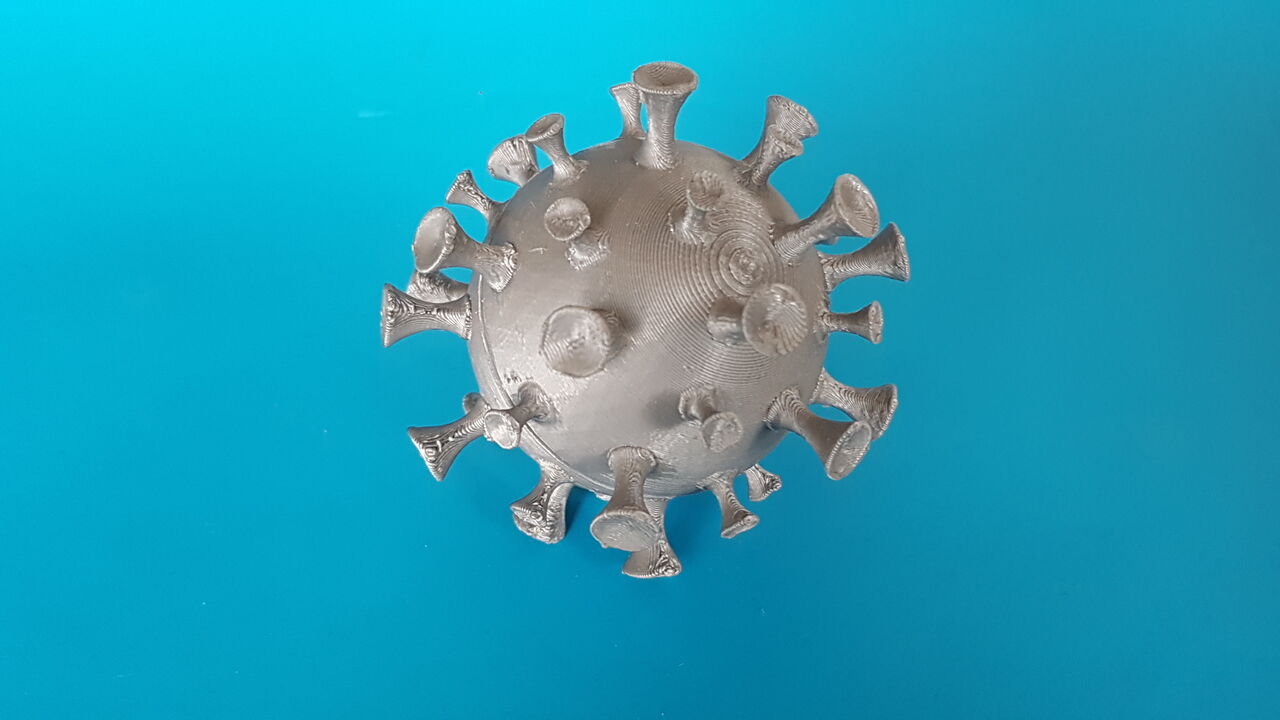 |
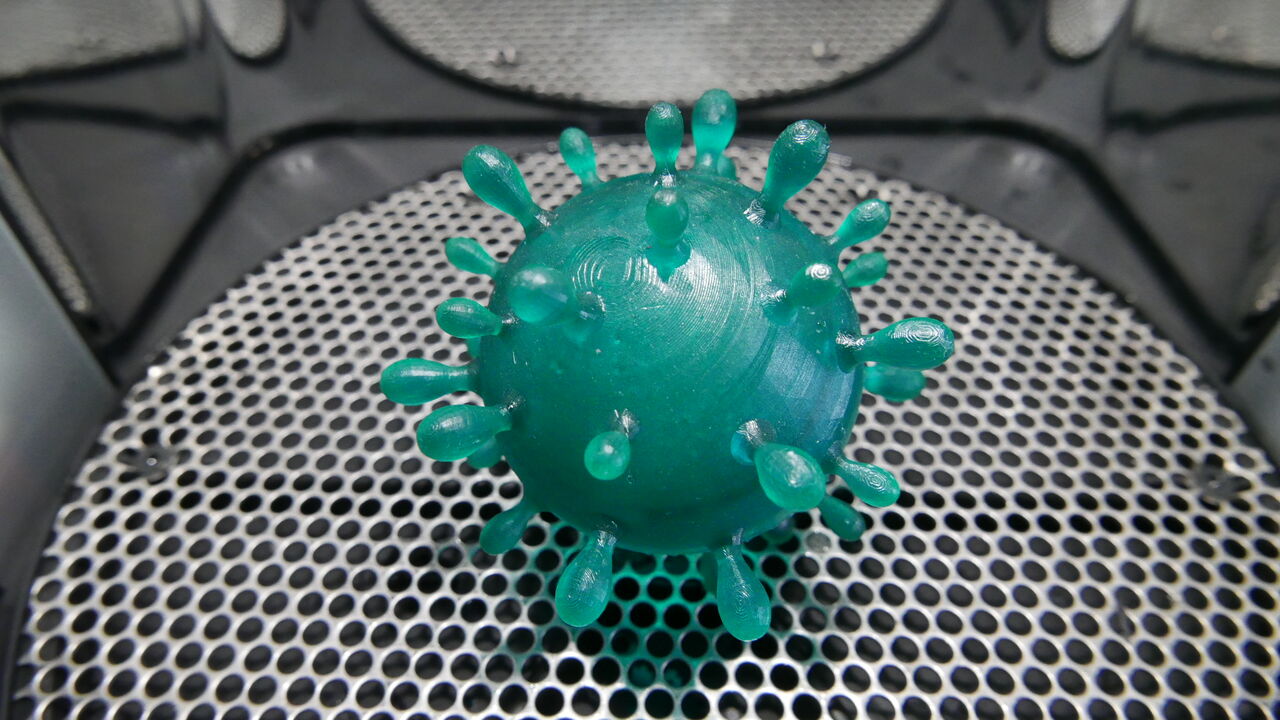 |
| Virus (FDM printing) | Virus variant (SLA printing) |
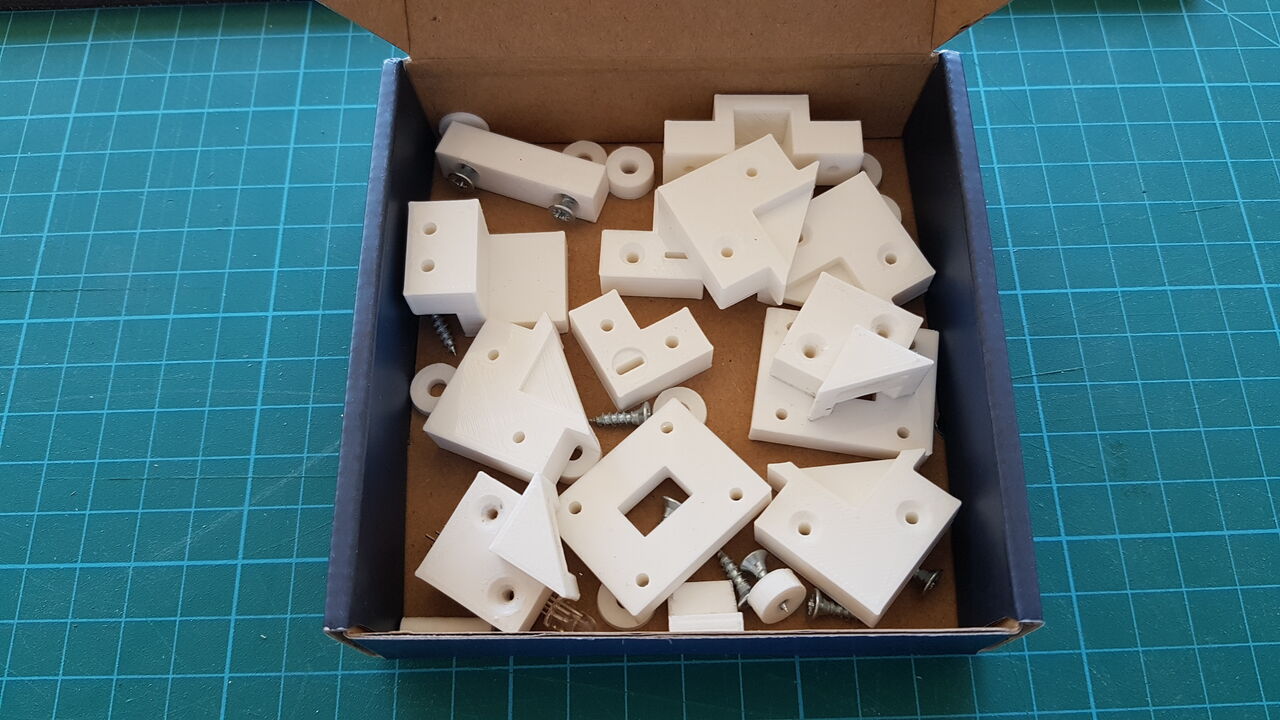
Puzzle box - 3D printed supports
Substractive fabrication processes¶
- The box itself has been entirely laser cutted (cutting + engraving).
- DNA silicon keypad has been casted in a CNC milled mold.
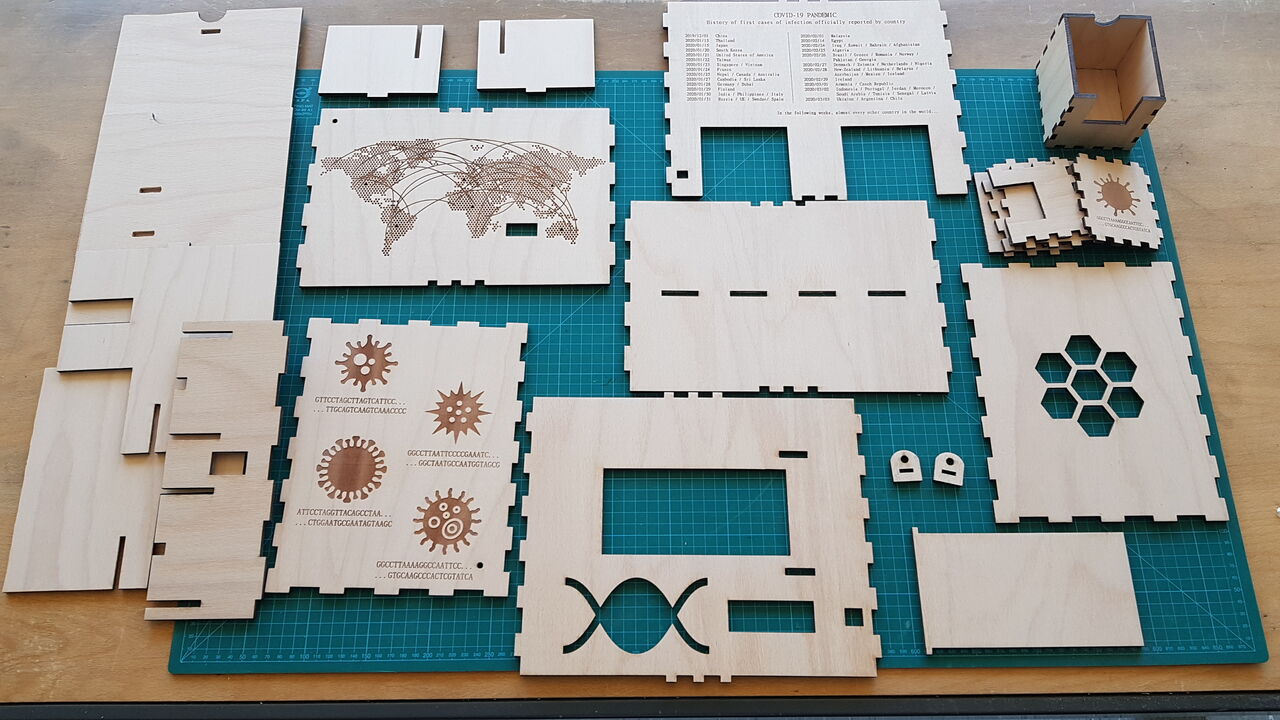
Puzzle box - All parts - Laser cutter

Silicone DNA keypad and molds
Electronics design and production¶
My puzzle box required 3 customized boards. They have been designed in Eagle software, produced by laser cutting and then soldered manually :
- Mother board that controls everything (ATmega328P microcontroller).
- Daughter board that handles 2 puzzles (ATmega328P microcontroller).
- Side board to handle countdown function (ATTiny2313 microcontroller).
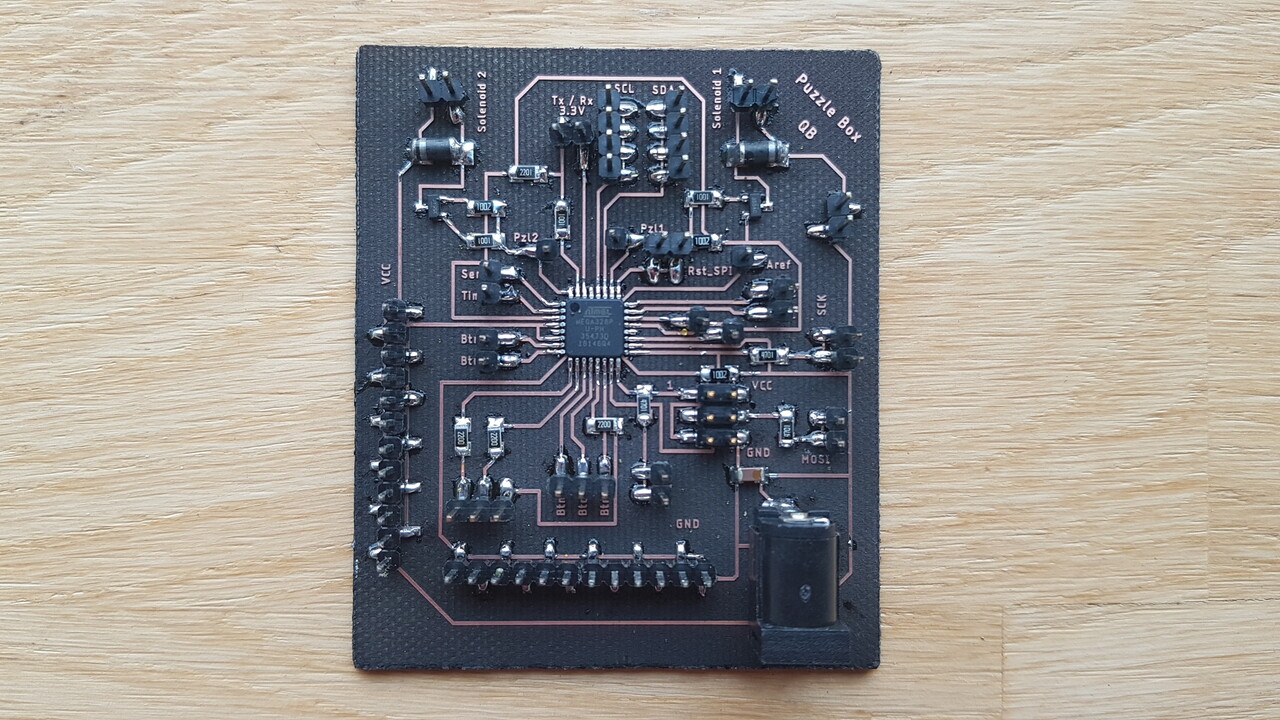
Puzzle box - Mother board
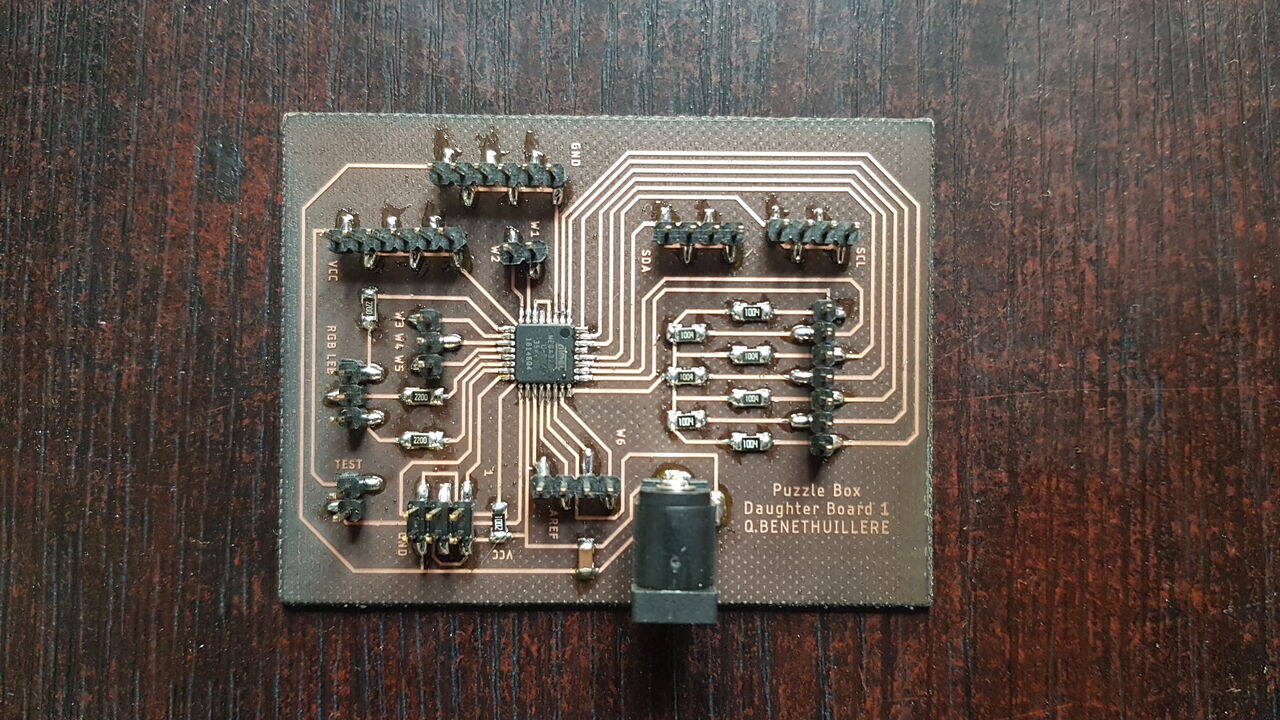
Puzzle box - Daughter board
 |
 |
| Countdown PCB - front view | Countdown PCB - back view |
Embedded microcontroller interfacing and programming¶
I have developed a phone application with MIT App Inventor that allows me to interact with the different mechanisms of my puzzle box (solenoid lock mechanisms, servomotor, LED, LCD, and countdown). It will especially allow me to send custom messages to players while they are progressing through the game, and to start the countdown when players are ready to start. Also it will allow me to pause the countdown if needed, and to force the lock mechanisms open if needed.
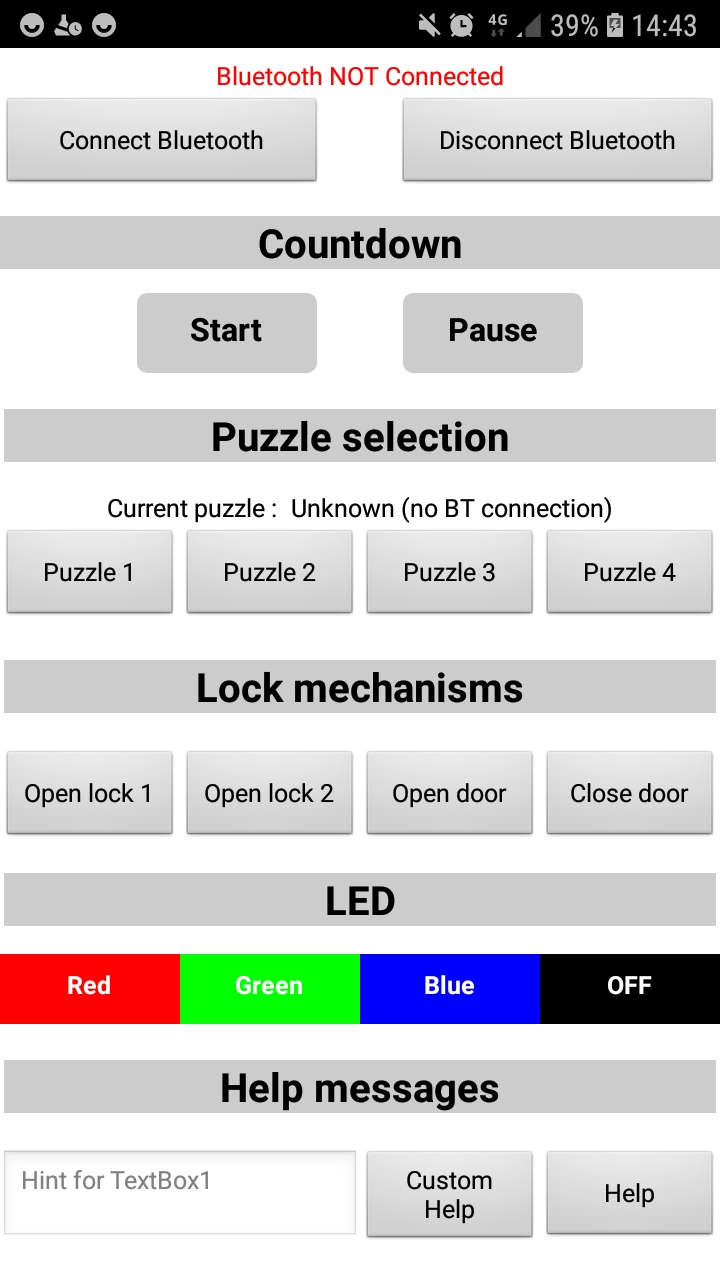
Puzzle box application - MIT App Inventor
System integration and packaging¶
Routing all the cables from the PCBs to the electronics components distributed on all the faces of the puzzle box was quite a challenge… As can be seen on the picture below the number of wires to connect all electronics modules together is non neglectable (and one puzzle is missing in the picture).

Puzzle box - Electronics integration testing
Thanks to a well-thought design, all the cables are in the end entirely hidden to the players.
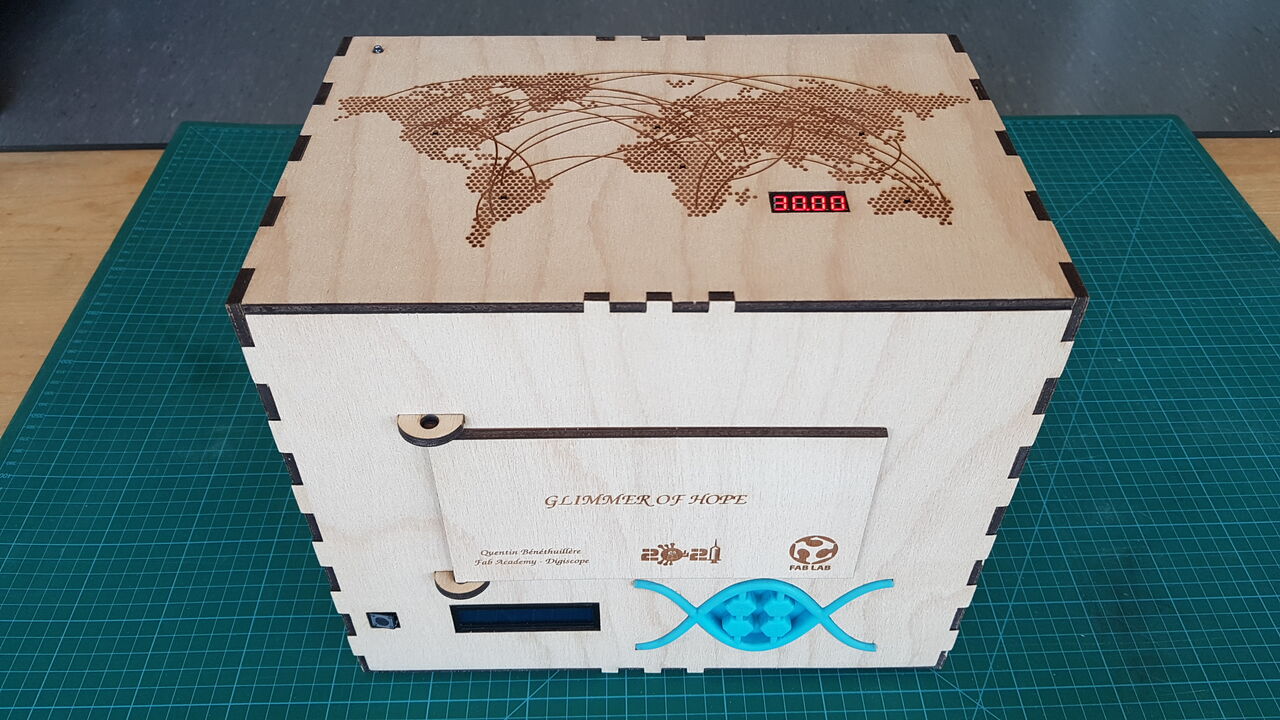 |
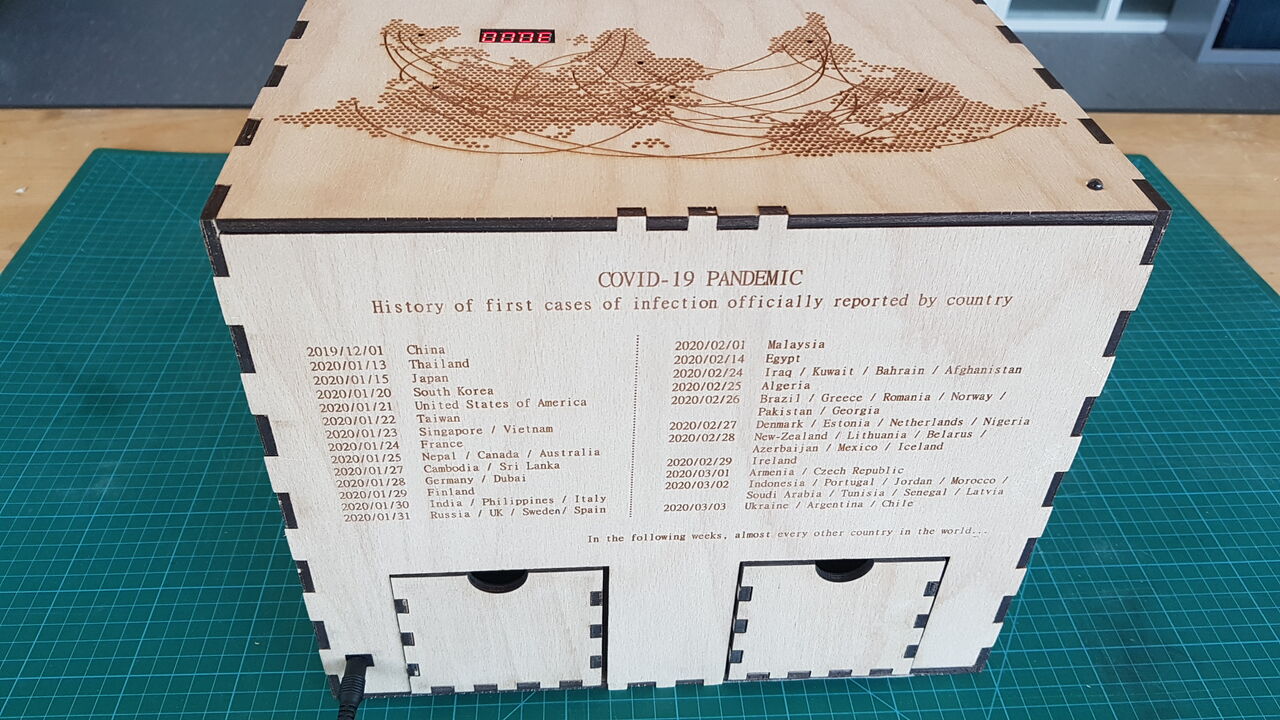 |
| Puzzle box - Front view | Puzzle box - Back view |
Make rather than buy¶
Given the relatively short duration of the FabAcademy and all the skills to get familiar with, it was not possible to make everything myself. The only things I can think of that I did not make are the following electronics components:
- HC06 Bluetooth module
- RFID card reader / RFID tag
- LCD
However, even though I could have had used a commercial four 7-segments digits display communicating over i2c for my countdown mechanism, I have rather implemented it with an 8 bits shift register which gave me a better understanding on how to control this type of displays.